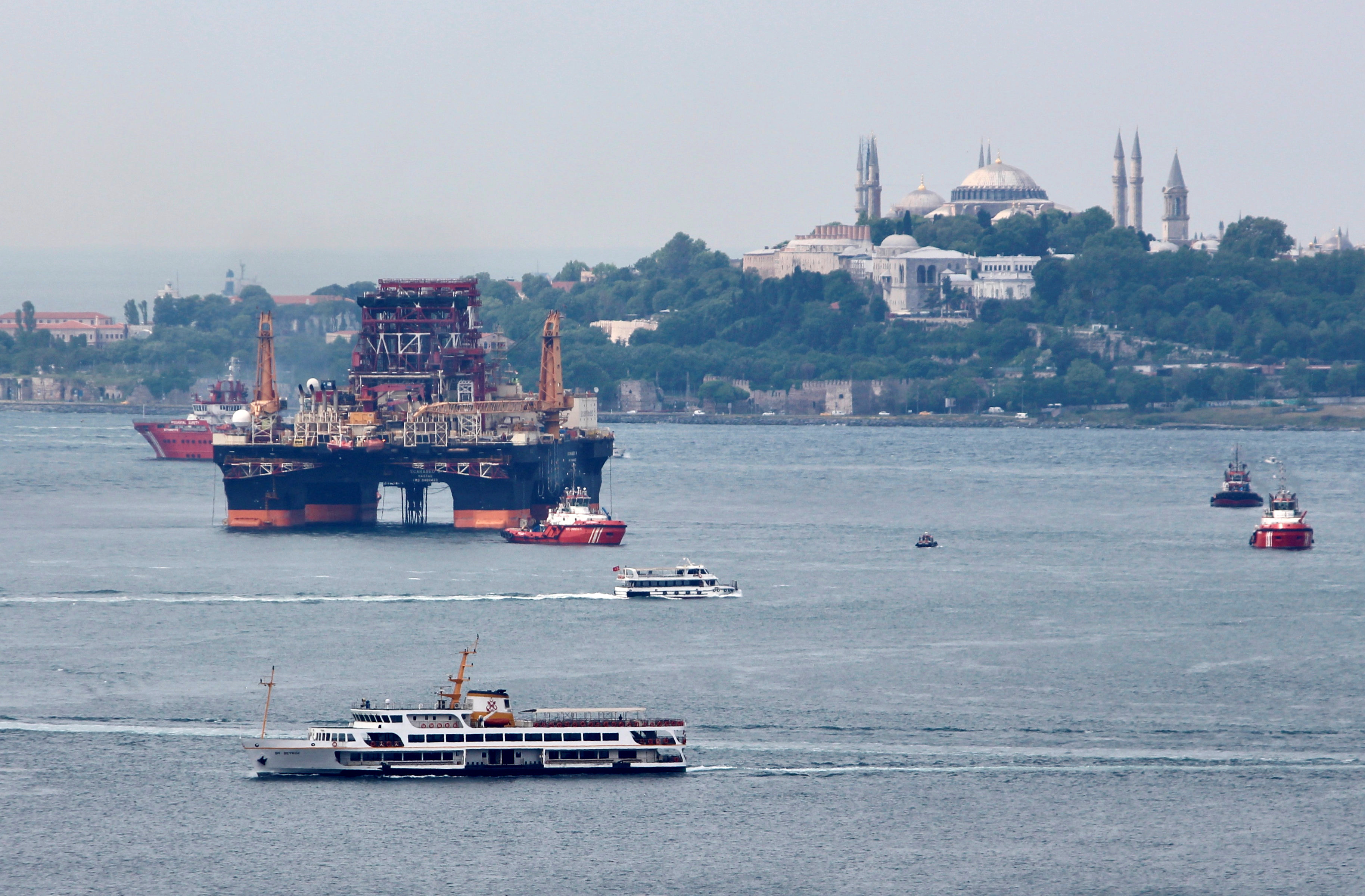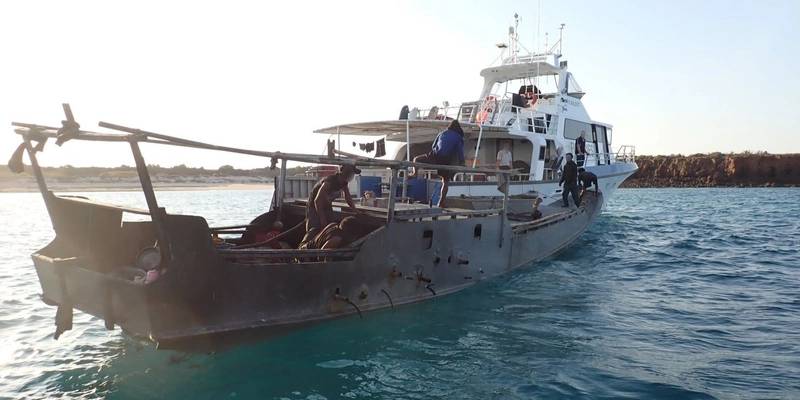Saipem, Subsea7 Sign Merger Agreement to Form Energy Services Giant – Marine Technology News

Report on the Merger of Saipem and Subsea7
Executive Summary
Energy service firms Saipem and Subsea7 have entered into a binding agreement to merge, forming a new entity named Saipem7. This strategic combination is poised to create a global leader in energy services, with a significant operational scale and a sharpened focus on sustainable infrastructure and renewable energy projects. The merger directly supports several United Nations Sustainable Development Goals (SDGs) by enhancing capabilities in clean energy, fostering innovation in infrastructure, and promoting economic growth through strategic international partnerships.
Strategic Rationale and Alignment with Sustainable Development Goals (SDGs)
Fostering Sustainable Infrastructure and Clean Energy (SDG 7, SDG 9, SDG 13)
The formation of Saipem7 represents a significant step towards advancing global energy transition objectives. The merger consolidates complementary competencies and technologies to build resilient infrastructure and foster innovation, directly aligning with SDG 9 (Industry, Innovation, and Infrastructure). A core component of the new company’s strategy is its contribution to climate action and clean energy through two dedicated business units:
- Sustainable Infrastructures: A primary business unit focused on developing sustainable projects globally.
- Offshore Engineering & Construction: This unit, operating as ‘Subsea7, a Saipem7 Company’, will integrate Saipem’s offshore wind business, strengthening its capacity to deliver large-scale renewable energy projects. This focus directly supports SDG 7 (Affordable and Clean Energy) and contributes to global efforts under SDG 13 (Climate Action).
Promoting Economic Growth and Global Partnerships (SDG 8, SDG 17)
The merger is a powerful example of SDG 17 (Partnerships for the Goals), creating a large-scale, cross-border collaboration between Italian and UK-based entities to achieve enhanced global impact. The substantial financial scale of Saipem7, with a combined backlog exceeding $50 billion and revenues of approximately $24.6 billion, is expected to be a major driver for sustained economic activity and job creation, thereby contributing to SDG 8 (Decent Work and Economic Growth).
Merger Transaction Details
Timeline and Financial Projections
- Agreement: A binding merger agreement has been signed, following a memorandum of understanding from February 2025.
- Completion: The merger is anticipated to be completed in the second half of 2026.
- Combined Backlog: In excess of $50 billion.
- Projected Revenue: Approximately $24.6 billion.
- Projected EBITDA: Over $2.3 billion.
- Projected Free Cash Flow: More than $930 million.
Corporate and Shareholder Structure
- Mechanism: An EU cross-border statutory merger, with Subsea7 being absorbed into Saipem.
- Resulting Entity: Saipem7 will be incorporated in Italy and headquartered in Milan.
- Stock Listings: Shares will be listed on both the Milan and Oslo stock exchanges.
- Ownership Structure: Assuming full shareholder participation, Saipem and Subsea7 shareholders will each own 50% of Saipem7.
- Major Shareholders: Key stakeholders in Saipem7 will include Siem Industries (approx. 11.8%), Eni (approx. 10.6%), and CDP Equity (approx. 6.4%).
Operational Structure of Saipem7
Core Business Units
The newly formed company will be structured into four distinct business divisions:
- Offshore Engineering & Construction
- Onshore Engineering & Construction
- Sustainable Infrastructures
- Drilling Offshore
Specialized Offshore Operations
The Offshore Engineering & Construction business will be organized within a distinct, operationally autonomous entity with a strong focus on sustainable energy solutions.
- Entity Name: Subsea7, branded as ‘Subsea7, a Saipem7 Company’.
- Scope: It will comprise all of Subsea7’s existing businesses along with Saipem’s asset-based services, including its critical offshore wind operations.
- Jurisdiction: The company will be incorporated in the U.K. and headquartered in London.
Which SDGs are addressed or connected to the issues highlighted in the article?
-
SDG 7: Affordable and Clean Energy
The article mentions that the new company’s portfolio will include “offshore wind,” which is a key source of clean and renewable energy. This directly connects the company’s operations to the goal of increasing access to clean energy.
-
SDG 9: Industry, Innovation and Infrastructure
The formation of Saipem7, a leading energy services company, involves building large-scale energy infrastructure. The creation of a specific business unit named “Sustainable Infrastructures” explicitly links the company’s strategy to developing sustainable and resilient infrastructure.
-
SDG 8: Decent Work and Economic Growth
The merger creates a major economic entity with a “combined backlog of over $50 billion” and projected “revenue of approximately $24.6 billion.” This scale of economic activity contributes to economic growth and productivity in the countries where it operates.
-
SDG 17: Partnerships for the Goals
The entire article describes a “binding merger agreement” between Saipem and Subsea7. This is a large-scale private-private partnership aimed at creating a more effective and capable entity in the global energy sector, aligning with the spirit of forming partnerships to achieve common goals.
What specific targets under those SDGs can be identified based on the article’s content?
-
SDG 7: Affordable and Clean Energy
- Target 7.2: By 2030, increase substantially the share of renewable energy in the global energy mix. The article states that the new company’s Offshore Engineering & Construction business will include “offshore wind,” directly contributing to the growth of renewable energy capacity.
-
SDG 9: Industry, Innovation and Infrastructure
- Target 9.1: Develop quality, reliable, sustainable and resilient infrastructure. The creation of a business unit specifically named “Sustainable Infrastructures” indicates a direct focus on achieving this target.
- Target 9.4: By 2030, upgrade infrastructure and retrofit industries to make them sustainable. The company’s dual focus on “Sustainable Infrastructures” and clean energy sources like “offshore wind” supports the goal of upgrading industrial and energy infrastructure to be more environmentally sound.
-
SDG 8: Decent Work and Economic Growth
- Target 8.2: Achieve higher levels of economic productivity through diversification, technological upgrading and innovation. The article notes that the merger combines “highly complementary geographical footprints, competencies and capabilities, vessel fleets and technologies,” which is expected to create a more productive and innovative company.
-
SDG 17: Partnerships for the Goals
- Target 17.17: Encourage and promote effective public, public-private and civil society partnerships. The merger between Saipem and Subsea7 is a prime example of a large-scale private-private partnership designed to enhance capabilities and resources within the critical energy sector.
Are there any indicators mentioned or implied in the article that can be used to measure progress towards the identified targets?
-
Implied Indicator for Target 7.2:
While not a formal indicator metric, the existence and scale of the “offshore wind” business within the new company serves as a qualitative indicator of investment and activity aimed at increasing the renewable energy share (related to Indicator 7.2.1: Renewable energy share in the total final energy consumption).
-
Implied Indicator for Target 9.4:
The strategic decision to create a “Sustainable Infrastructures” business implies a focus on projects that would be measured by sustainability metrics, such as Indicator 9.4.1: CO2 emission per unit of value added. The company’s activities would directly influence this indicator.
-
Indicator for Target 8.2:
The article provides financial figures that are components of economic productivity and growth. The projected “revenue of approximately $24.6 billion” and “EBITDA of over $2.3 billion” are direct measures of economic value added, which relates to measuring progress in economic productivity.
-
Indicator for Target 17.17:
The article quantifies the financial scale of the partnership. The “combined backlog of over $50 billion” can be seen as a proxy for Indicator 17.17.1: Amount of United States dollars committed to public-private and civil society partnerships, demonstrating a significant financial commitment to this private-private partnership.
SDGs, Targets and Indicators
| SDGs | Targets | Indicators (Mentioned or Implied) |
|---|---|---|
| SDG 7: Affordable and Clean Energy | 7.2: Increase substantially the share of renewable energy in the global energy mix. | The company’s business activity in “offshore wind” implies a contribution to Indicator 7.2.1 (Renewable energy share). |
| SDG 9: Industry, Innovation and Infrastructure | 9.1: Develop quality, reliable, sustainable and resilient infrastructure. 9.4: Upgrade infrastructure and retrofit industries to make them sustainable. |
The creation of a “Sustainable Infrastructures” business unit implies a focus on projects that would be measured by Indicator 9.4.1 (CO2 emission per unit of value added). |
| SDG 8: Decent Work and Economic Growth | 8.2: Achieve higher levels of economic productivity through diversification, technological upgrading and innovation. | The article provides financial data (“revenue of approximately $24.6 billion”) which is a direct measure of economic value and productivity. |
| SDG 17: Partnerships for the Goals | 17.17: Encourage and promote effective partnerships. | The financial scale of the merger (“combined backlog of over $50 billion”) serves as a proxy for Indicator 17.17.1, quantifying the value of this private-private partnership. |
Source: marinetechnologynews.com

What is Your Reaction?
 Like
0
Like
0
 Dislike
0
Dislike
0
 Love
0
Love
0
 Funny
0
Funny
0
 Angry
0
Angry
0
 Sad
0
Sad
0
 Wow
0
Wow
0













































































